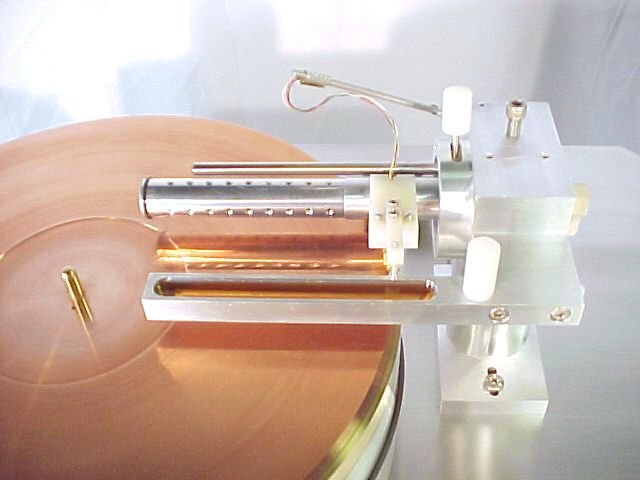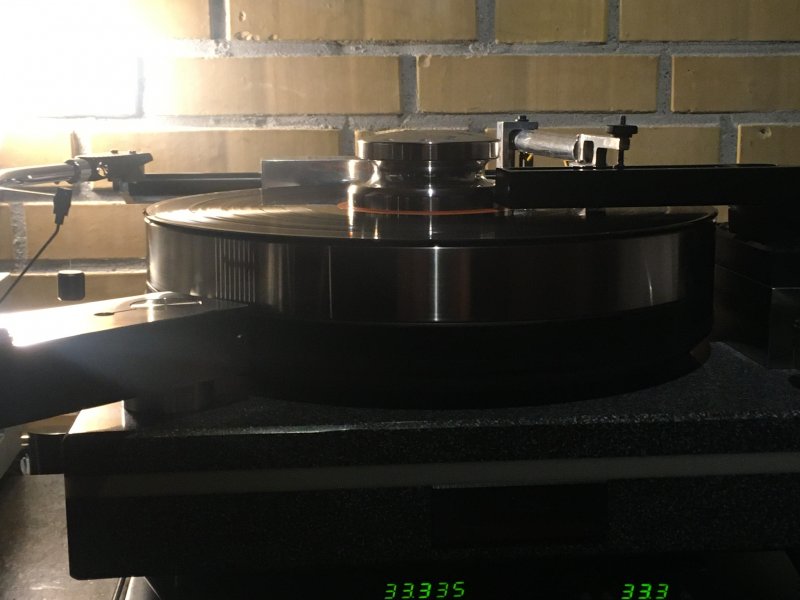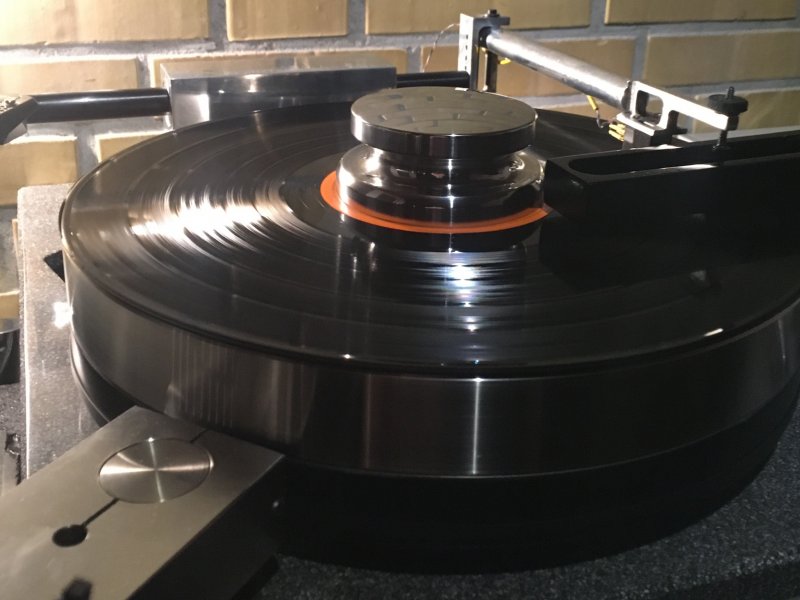I have had both the Thales Simplicity II and the Statement tonearms for review, listening to them both side by side and on a number of different 'tables. I would agree with those posters who find the Simplicity II to be a beautifully fluid, spatially correct and rhythmically articulate tonearm - but I'd also agree that it has slightly limited bottom-end weight and a resulting loss of dynamic impact and authority. In some ways this mimics the performance of the TTT Compact 'table and also Micha Huber's own listening tastes, which tend to small scale, acoustic works and voice.How well does that arm track? I use a linear tracker and find that the drag of the stylus will pull forward a bit so if you try setting up so the stylus just lands at the edge of the inside of the tracking line, the pull of the record forward may pull it into a better alignment. With a linear tracker, even a small error seems somehow more pronounced than a pivoted arm, which one would think is counterintuitive but is real imho.
However, the Statement is a completely different beast. It has the musical virtues of the Simplicity II combined with a natural sense of weight, bottom-end energy and absolute dynamic authority. This generates a much more clearly defined and explicit soundstage, natural perspectives and impressive dimensionality. The uninhibited sense of flow and dynamic discrimination (at both ends of the range) combined with the immediacy, intimacy and beautiful tonality and textures of the Simplicity II reproduces recordings with a wonderfully natural sense of musical engagement and communication - and where appropriate, purpose and intent. Set up and adjustment is far better/easier and more precise. It is even possible to adjust VTA on the fly, as long as you have a stable turntable and a steady hand. If the Simplicity II majors on delicacy, precision and perfect musical manners, the Statement is its big brother with serious attitude. It's a genuinely great arm and in my experience, one of the most musically enjoyable and convincing available - as well as one of the most beautifully crafted.
I would also like to echo Mr C's comments regarding alignment, especially effective length. Thales supply a mounting jig that accepts the removable sled/cartridge from both the Simplicity and the Statement. A typically clever design, it corrects for optical alignment and makes mounting your cartridge 'simplicity' itself. It also protects the precision bearings in the tonearm from excessive torque. What it doesn't do is load the cantilever when you are viewing its position. Micha Huber says that the jig incorporates compensation for this, but obviously that will be an arbitrary judgement. In reality, the deflection of the cantilever will depend on compliance. cartridge mass and VTF. That means that although the jig IS really useful when it comes to mounting the cartridge, it ISN'T the last word in alignment. Tiny adjustments in effective length are clearly audible with significant musical results. Get it exactly right and with the right records the Statement can conjure some of the most lifelike and convincing musical reproduction you're likely to hear. Fortunately, the jig does make such incremental and repeatable adjustments far easier to achieve. Anybody who uses a Statement arm or the Simplicity II who hasn't experimented with this alignment parameter is likely sitting on a massive, free musical upgrade, an upgrade that makes the Statement - in these days of spiralling inflation when it comes to arm prices - an even bigger bargain.
On a final note, the slender arm-tubes and short overall length mean that many people assume that the Thales 'arms are relatively low mass. It ain't so. Although Thales are reluctant to state an effective mass (the calculation of such being something of a moveable feast) using two tonearms in parallel - even if they are quite light individually - makes for a mass-y structure. The Statement definitely has a medium to heavy effective mass and is most comfortable with low (and even really low) compliance cartridges. It's no coincidence that Thales also builds the EMT pick-ups! While I found the Lyra Etna Lambda SL to be an excellent match, there was no ignoring the special musical affinity between the Statement and the lower compliance and higher mass of the Fuuga. If you run a Thales arm - or are tempted to do so - look to pair it with a cartridge from the lower compliance school if you want to hear the tonearm at its best.









